MARKET OVERVIEW
This global saffron products market is a niche market concerning production, processing, distribution, and consumption of saffron-based products. Ranging from food spices to pharmaceutical preparations and cosmetics to dietary supplements, the market ranges extensively. Due to the distinctive flavor, intense red color, and various health benefits, it is referred to as "red gold"; hence, it so turns out to be one of the most sought-after and expensive commodities worldwide. The most important industries in this case are the market, which meets the requirements of massive numbers of consumers, delivering innovation in nearly every aspect of life. The industry assists in bridging agricultural producers and global consumers.
Saffron is produced primarily in nations like Iran, India, Greece, and Spain. Sophisticated cultivation methods are used in these nations to preserve the quality and purity of the product. Global level expectations ensure perfection at the processing and packaging stage in order to conserve the volatile odors and bioactive chemical constituents. Saffron at international levels is not applied in pure additive but for its cultural and traditional purpose, it is used these days as a luxurious material that embellishes drinks of high values and health therapies. The global saffron products market will be transformed with globalization and technological innovation. Saffron products companies will use advanced quality control techniques to fulfill regulatory and stringent consumer expectations more and more. Blockchain applications can be applied in the field of traceability with the aim to verify authenticity of saffron and prevent forgery, further enhancing customer trust and altering market circumstances in favor of authentic producers and brands.
Consumer knowledge regarding the health attributes of saffron will drive its application in the development of new products. Food companies engaged in the nutraceutical business will likely develop most of the formulated functional foods and dietary supplements that incorporate bioactive ingredients, like crocin and safranal, which have been linked with potential therapeutic applications.
Additionally, the cosmetics business will leverage saffron's inherent antioxidant and anti-inflammatory properties in the formulation of hair and skincare to take advantage of this emerging marketplace for clean and sustainable beauty products. Economic model of the global saffron products market will alter as global trade policy and consumer trend evolve. Ethical sourcing and eco-friendly farming will be the make-or-break factor because the consumers will get environmentally conscious and socially aware. This will prompt the saffron producers to adopt environmentally friendly farming, organic farming, and water-efficient farming practices that will maintain them in business for long intervals. Online trade and internet advertising will redefine the path to consumer plates worldwide in case of saffron. Direct-to-consumer models will enable premium saffron products makers to sell directly to their consumers without middlemen in a bid to transfer more favorable prices and greater quality control to the consumers. The expensive spice will now find new markets due to a partnership with culinary arts professionals, revealing its possibilities in traditional and modern recipes.
The global saffron products market is a new industry, one that would experience a quantum leap. The process it would take is that of technology breakthroughs, shifts in consumer habits, and an environmental concern. And as it develops with the passage of time, the market would redefine how saffron is used, to make the spice a valuable component in global trade and culture.
Global saffron products market is estimated to reach $793.0 Million by 2032; growing at a CAGR of 7.4% from 2025 to 2032.
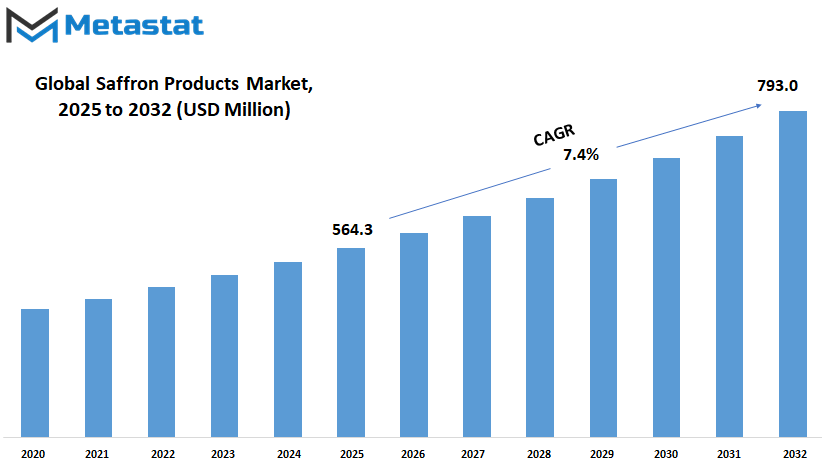
GROWTH FACTORS
The global saffron products market for usage in the kitchen and wellness sector is quite phenomenal. As consciousness related to well-being and food continues to rise, consumers seek to consume only organic, real items. In present times, not only due to their application but also due to their well-being advantages, individuals prefer greater use of spices such as saffron. This is particularly true for wellness products, as saffron is highly sought after for its therapeutic benefits. It also is more in demand in the skincare and wellness product category because of its antioxidant and anti-inflammatory characteristics. These characteristics make saffron a commodity that those who want to take their skincare to the next level or those who just want to feel better about themselves would seek out. As there is a surge of interest among consumers to buy products with natural and positive ingredients, there will be increasing demand for saffron.
However, the global saffron products market has threats that may slow down its growth. Some of the significant disadvantages are elaborated below. First, it is costly to produce saffron. The reasons are the large labor demands when harvesting. In fact, saffron must be hand-picked. Hence, it takes longer and also involves a lot of money, implying high spending could render such goods prohibitively expensive for customers in an already competitive market.
Apart from the extremely high cost of production, another problem the saffron market needs to encounter is adulteration and quality loss. As the saffron is highly expensive, fraudulent activities such as its blending with other substances or selling them with extremely low quality take place. Not only does it compromise the quality of the saffron, but it also loses the trust of the customer on the market. Therefore, achieving the highest quality standards in a transparent manner will be very important for this market.
On the contrary, its use in health supplements and functional foods provides bountiful opportunities for growth. Growing demand for products that guarantee health and wellness is what consumers are looking for today. Now, apart from the traditional culinary application, the potential of saffron to segments like health supplements and functional foods is slowly being appreciated. This new addition may trigger further demand and open up new markets. As consumers realize more and more about the health advantages of saffron, new uses of the commodity are anticipated to be a dominant driver of growth in the market in the coming years.
MARKET SEGMENTATION
By Type
It's also considered a spice for flavor and odor and aesthetic purposes. Saffron is among the ingredients that have been utilized for centuries both as food, medicine, and cosmetics. As people discover various uses from it, saffron today is available in numerous forms fitting any type of consumer. Some examples include saffron strings or stripes, powdered saffron, saffron extracts, capsules, saffron tea, saffron oil, saffron-infused cosmetics and skincare creams, and saffron flavoring products.
Saffron threads are perhaps the most natural way of using this spice. The threads are removed from the stigma of the crocus, dried, and then utilized in whole form. The flavor along with the bright red color can turn any dish into something extraordinary at a very fast pace. Saffron powder is the second form in which the saffron threads are ground into very fine powder in order to make this spice. This powder is simple to measure and combine with other recipes and, as such, is a good convenience for culinary use.
The concentrates are made via the process where the saffron threads are soaked in alcohol or water and all its active compounds extracted. Overall, the saffron extract gets used in health supplements giving the same saffron benefits but more concentrated in value. Regulated dosages of the medication could be consumed with the assistance of saffron capsules. These are utilized for various health benefits like enhancing mood, memory booster, and aiding digestion. Saffron tea is something that has recently become increasingly popular as a comfort drink.
This drink tastes quite tasty, apart from providing a calming flavor; it also has medicinal value. Other than medicinal purposes, saffron oil is also applied in various beauty treatments where saffron threads are blended with carrier oil in boiling water and used afterward on the skin. In this way, the anti-inflammatory property of saffron infusion prevents cell damage due to the antioxidants present in saffron, and thus the skin looks healthy. Thus, saffron cosmetics and skincare products are also gaining traction more and more. Such products encompass lotions, creams, and serums that are infused with saffron to boost the skin tone, texture, and overall radiance.
Saffron's potent antioxidants protect the skin from damage caused by free radicals. Lastly, saffron-flavored foods like chocolates and drinks have formed a new trend in daily snacks. Such foods provide the convenience of saffron flavor and health benefits in a ready-to-eat form. Thus, saffron appears in various preparations, but it is used for a particular purpose. From cooking to a usage in health supplements, skin care or flavored foods, saffron provides value and contributes to the health of an individual's day-to-day life.
By Application
The market is segmented in to classes of different industries and customer needs on the basis of application, one of which is one of the important application areas being the food and beverages industry where the ingredient forms one of the critical parameters to attain flavor, quality, and preservation of the products.
Firms in this sector employ a mixture of chemicals in order to take care of the retention of the flavors and the nutritive value of their line products and, therefore, are able to attain customer satisfaction. Natural flavouring agents, preservatives as well as colorants are some of the significant ones used. To further enhance the visual attributes of foods and food components; moreover, also to preserve food against spoilage these drug and supplement formulations too belongs to this category. Under this section, ingredients are utilized for a number of uses, including the manufacture of medicines and nutrition supplements.
These types of ingredients assist in preparing pills, capsules, and fluids designed to enhance health and wellness. The natural supplements sale has grown with demand focused on improving immunity and regulating any particular disease. High-quality ingredients in a pharmaceutical market help ensure that the products on sale work, and patients must therefore be safe. There is also the cosmetics and personal care market that is relevant to the same market. Moisturizing creams, lotions, shampoos, and perfumes need organic and natural ingredients to deliver to customers what they have advertised.
The market in this product sector is now moving towards natural and organic ingredients because its customer demands clean and non-toxic products. Customer demand for new, effective and innovative formula continues to grow as individuals desire to possess nice-looking skin and well-being. The aroma therapy and fragrance market is for the production of essential oils and perfumes, which shall be generally used in practices and personal care via utilization of ingredients. Aromatherapy relies on plant extracts and herbs naturally to ensure wellness and stress relief and healthy lifestyle in general.
The wellness trend is increasing among the population, and hence, the use of aromatherapy products in daily life. The last is the use of the textile and dyeing industry. Textile treatments, finishes, and dyes are extremely crucial for quality improvement, durability, and appearance of textiles. The firms in this industry now emphasize eco-friendly and non-toxic solutions to respond to demand for ecologically safe and friendly products. All these industries create demand in specific ingredients where companies modify their products to adapt to the changing needs of the customers and the demands of the market.
By End-User Industry
There exists a possibility to classify a market based on the application of various products and services in various industries. Having achieved this, classification is done further by specification of the industry type by the final consumer. Examples include food producers, pharmaceutical companies, cosmetic and skin care firms, institutions located in retail outlets such as supermarkets, specialty stores, e-commerce stores, food service industries like restaurants, hotels, and catering houses.
The principal actors in the industry are food manufacturers, who transform raw products and materials into food products purchased by the consumers. They require continuous supplies of ingredients and packaging materials to maintain their production lines. Food manufacturers also depend on technology that can enhance the quality and efficiency of their products. Such an industry continues to evolve in response to the need of consumers for healthier, sustainable, and convenient foods.
Pharmaceutical industries are also playing a role in this market. They manufacture drugs and other healthcare equipment that constitute the primary structure of the improvement and upkeep of public health. They attempt to develop safer, more efficient drugs against most disease disorders. Owing to speedy advancements in medical science, pharmaceutical industries are researching new drugs and personalized medicine as well as rapid delivery systems. Their work is essential to individual health and to the overall well-being of the population. Cosmetic and skincare companies form another big category.
These firms specialize in developing products that enhance look as well as health. The business of cosmetics has seen rapid expansion mainly due to awareness among people pertaining to skincare and selfcare. Companies in this segment have invested significantly in the creation of new solutions that are meant to solve skin problems or enhance skin wellness more generally. The demand for natural, organic, and cruelty-free products also increases, which compels cosmetic companies to redirect their products to meet the shifting tastes of the consumers. In Retail, stores and supermarkets are an extremely significant channel by which the product finally reaches the consumer.
They sell both through physical outlets as well as through online, which is consequently filling a huge market that can facilitate a consumer to shop in whatever way is convenient to them. Supermarkets are extremely crucial in terms of providing the consumer with fresh food and other home products. Specialty stores provide special products to specific consumers. This is owing to the high adoption rates of e-commerce. Online stores enable consumers to purchase various products delivered straight to their doorsteps; that is why this industry keeps expanding and gives no sign of withdrawal. Foodservice sector - restaurants, hotels, catering entities come under the foodservice sector that provides food directly to consumers. The role of this sector is not just to feed but to also make the consumer happy with the meal, whether at a hotel or during an event. As consumer palates shift toward healthier, more sustainable food consumption, so are foodservice companies shifting their menus.
In summary, if we examine the market based on end-user industries, we have a differentiated and interrelated market where every industry plays its part in making up the overall market movement.
By Distribution Channel
The global saffron products market can be divided into various channels of distribution, and all of these distribution channels are significant to supply saffron to every region of the world. They include online retail, offline retail, and direct sale by farmers and producers. Online retail is among the fastest-growing distribution channels in the recent past because increasing consumers are opting for online purchase platforms for their goods.
The home convenience of home shopping has brought the online retail path to the market for saffron and provided a great diversity of products. The customers could compare prices, going through the reviews, and get other types of saffron just at home. This distribution channel also readily accommodates the world-wide reach, expanding saffron producers' accessibility around the globe to sell its more diverse goods to that vast market. The sales channel for saffron that still holds a good position is yet to be offline retail.
Examples of these are supermarkets, food shops which specialize in spices, among others. The offline enables a consumer to view the saffron, to touch it, and perhaps smell it before purchase which can be advantageous to such who are concerned about the quality product. For most people, the ability to discuss with informed personnel or seek suggestions is a part of the overall shopping process. Although internet-based shopping has become more popular, for the average shopper, retailing offline remains a preferred option, particularly where internet penetration is low or where the culture of shopping traditionally continues. Direct selling is another essential distribution channel in the market for saffron.
This process entails selling saffron directly from producers or manufacturers to consumers, bypassing intermediaries. Direct sales tend to be done at neighborhood markets, through farmer's cooperatives, or through contracts with companies that deal directly with producers. This is a channel where there is a direct link between the producer and the consumer, providing the freshest saffron available. It also makes the consumer more sure of the genuineness and quality of the product because he is purchasing it from the original source. It also allows producers to earn a higher percentage of the profit. Each channel of distribution matters in the international saffron market since they serve differently needed and desired needs and preferences of consumers. Offline and online retailing are increasing, yet direct selling provides a more personalized and direct method for distributing saffron, to the benefit of both buyers and sellers.
|
Report Coverage |
Details |
|
Forecast Period |
2025-2032 |
|
Market Size in 2025 |
$564.3 million |
|
Market Size by 2032 |
$793.0 Million |
|
Growth Rate from 2025 to 2032 |
7.4% |
|
Base Year |
2024 |
|
Regions Covered |
North America, Europe, Asia-Pacific Green, South America, Middle East & Africa |
REGIONAL SEGEMENTATION
Geographic region analysis of the global saffron products market includes North America, Europe, Asia-Pacific, South America, and Middle East & Africa. All the above regions have varying market sizes and growth rates. In 2018, the market for European saffron products was 78.9 million US dollars and is projected to grow to 124.6 million US dollars by 2025 with a growth rate of 6.8% per annum from 2019 to 2025. This reflects a consistent growth in European demand for saffron products throughout this period.
North America can be segmented into three major markets: the U.S., Canada, and Mexico. The European market is segmented into specific nations, including the UK, Germany, France, Italy, and the rest of Europe. In Asia-Pacific, the market is segmented into major countries including India, China, Japan, South Korea, and the rest of Asia-Pacific nations. This still divides and identifies the importance of regional variations in consumer taste, cultural importation, and localized market considerations towards the final saffron product market.
South American nations like Brazil and Argentina have been viewed as prime markets for manufacturing saffron products. The Middle East & Africa region can be made up of segments like the GCC nations, Egypt, South Africa, and other countries in the rest of the Middle East & Africa region. Each country has its own market scenario along with consumer behavior that further determines demand for saffron products.
Geographic market segmentation enables companies and industry experts to have a clearer picture of where the opportunities and challenges exist across the globe. Therefore, it is convenient for them to personalize marketing strategies or products or look for growth prospects within the market for saffron products. With saffron still being valued for its medicinal, culinary, and cosmetic properties, global saffron products market will expand further, and regional markets will be extremely significant for future development.
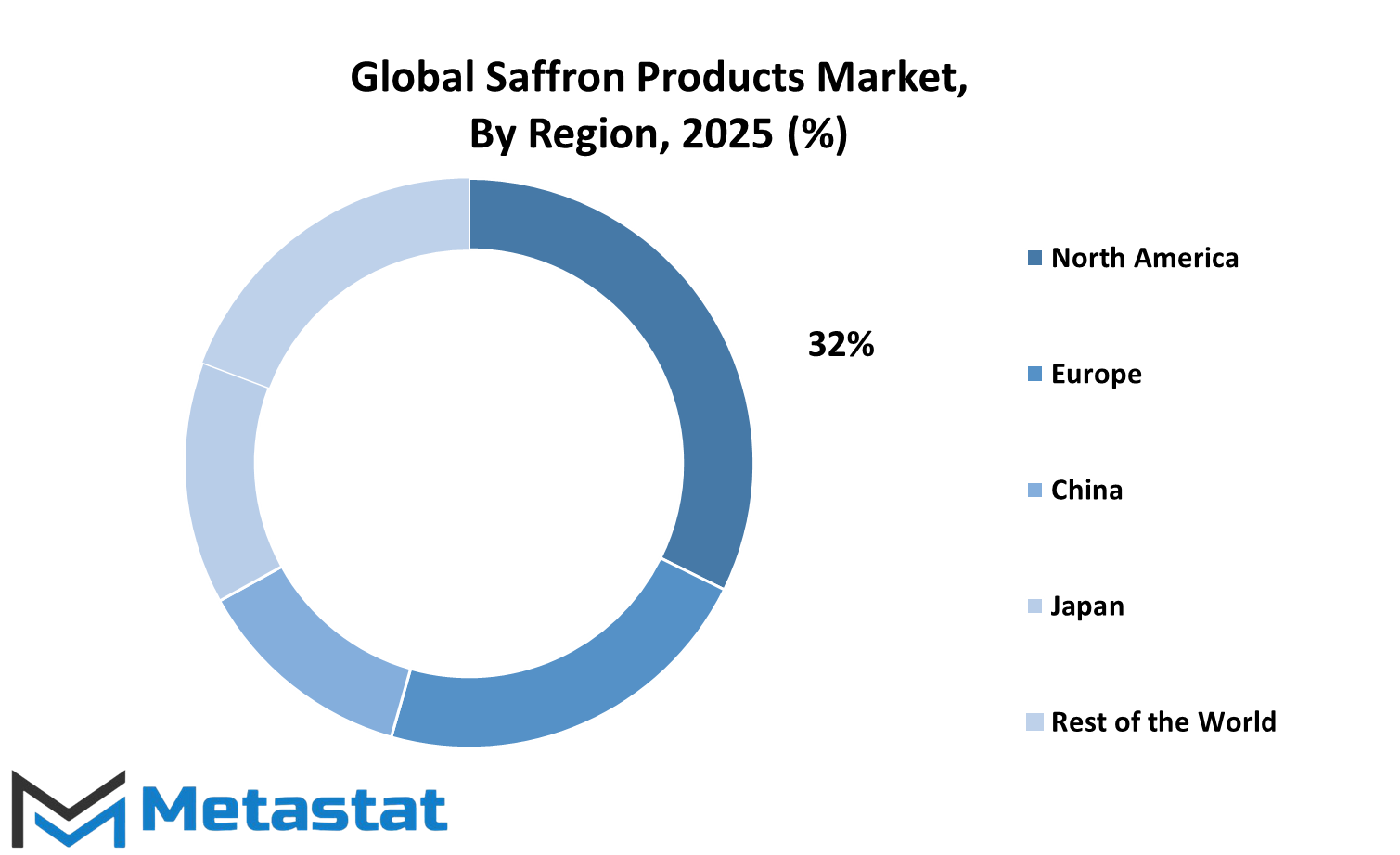
COMPETITIVE PLAYERS
The global saffron products market is dominated by the presence of few large players that have gained significant prominence in the international market. They deal in cultivation, processing, and supply of saffron as one of the most expensive and sought-after spices of the world because of its distinctive taste, hue, and medicinal qualities.
Among these leading players, Local Sparrow is well-known due to the fact that they work with organic and high-quality saffron. They provide sustainable farming, so their product neither has chemical residues nor can be impure. McCormick & Company, Inc., a leading spice manufacturer, markets saffron through its comprehensive suite of products to customers all across the world. One other major player is Saffron King, which enjoys considerable experience in saffron growing as well as trading. The company is well known to supply high-quality saffron and maintain leadership in wholesale as well as retail markets.
More Saffron, a business entity offering saffron of best quality, seeks to provide the world's best saffron. The Saffron Company, one of the market leaders, is confident of its provision of authenticity and purity through meticulous procurement and quality check of the saffron. Heritage Saffron, additionally having pride at the level of saffron production through age-old processes, holds considerable significance in the market.
Some other major players in the saffron products market are Ashapura Trading Company, Ajfan Dates & Nuts, and Zamindar Saffron. These organizations buy, pack, and sell saffron. They usually provide options for customers, which can be used in medicine and cooking. Pure Saffron Farms boasts of manufacturing high-quality saffron free of artificial preservatives and additives using a friendly environmental process. GiTAGGED, Neenu's Natural, and ORGANIC KASHMIR are equally significant companies that specialize in selling organic saffron so that their produce is free from chemical pesticides and fertilizers.
Kanz & Muhul and AMIN-BIN-KHALIK are two other contributors to the business that deliver high-quality saffron products. They take pride in their commitment to quality and customer satisfaction, making them reputable names in the industry. The companies not only distribute saffron but also engage in making its benefits reach more people, enhancing awareness of the spice globally. Their commitment to high-quality saffron products guarantees that customers continue to experience all the worth this valuable spice they have to offer their kitchens and beyond.
Saffron Products Market Key Segments:
By Type
- Saffron Threads
- Saffron Powder
- Saffron Extracts
- Saffron Capsules
- Saffron Tea
- Saffron Oil
- Saffron-Based Cosmetics & Skincare Products
- Saffron Flavored Products
By Application
- Food & Beverages
- Pharmaceuticals & Supplements
- Cosmetics & Personal Care
- Aromatherapy & Fragrances
- Textile & Dyeing
By End-User Industry
- Food Manufacturers
- Pharmaceutical Companies
- Cosmetic and Skincare Brands
- Retail (Supermarkets, Specialty Stores)
- Online Retailers
- Foodservice (Restaurants, Hotels, and Catering)
By Distribution Channel
- Online Retail
- Offline Retail
- Direct Sales (Farmers, Manufacturers)
Key Global Saffron Products Industry Players
- Local Sparrow
- McCormick & Company, Inc.
- Saffron King
- Mehr Saffron
- The Saffron Company
- Heritage Saffron
- Ashapura Trading Company
- Ajfan Dates & Nuts
- Zamindar Saffron
- Pure Saffron Farms
- GiTAGGED
- Neenu’s Natural
- ORGANIC KASHMIR
- Kanz & Muhul
- AMIN-BIN-KHALIK
WHAT REPORT PROVIDES
- Full in-depth analysis of the parent Industry
- Important changes in market and its dynamics
- Segmentation details of the market
- Former, on-going, and projected market analysis in terms of volume and value
- Assessment of niche industry developments
- Market share analysis
- Key strategies of major players
- Emerging segments and regional growth potential



.png)
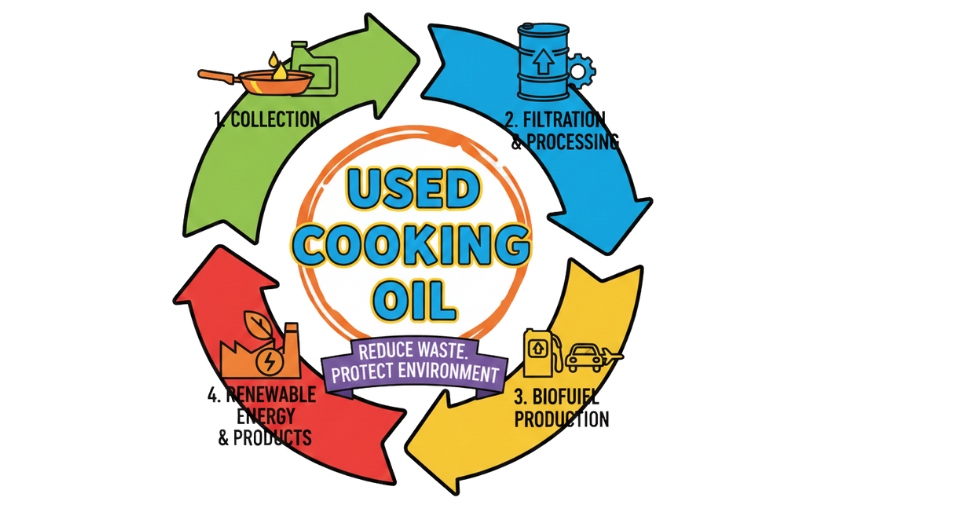
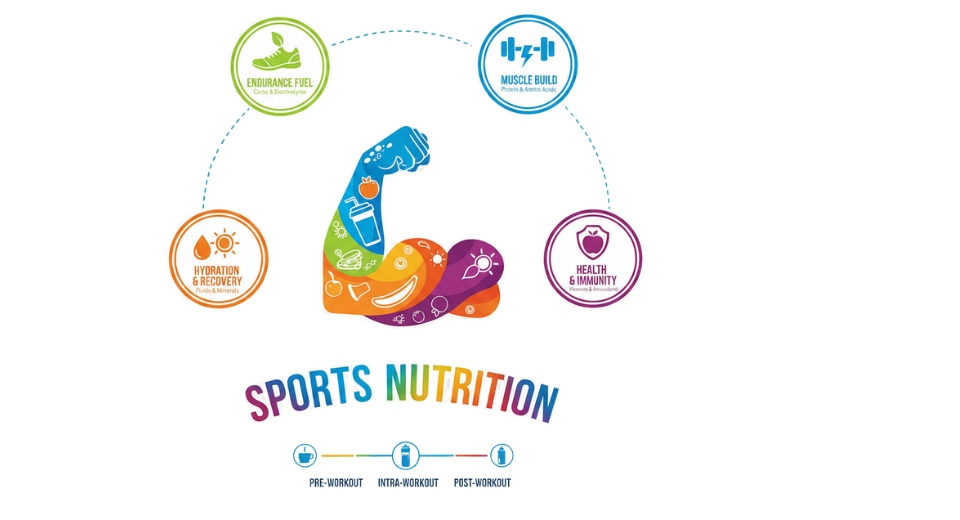
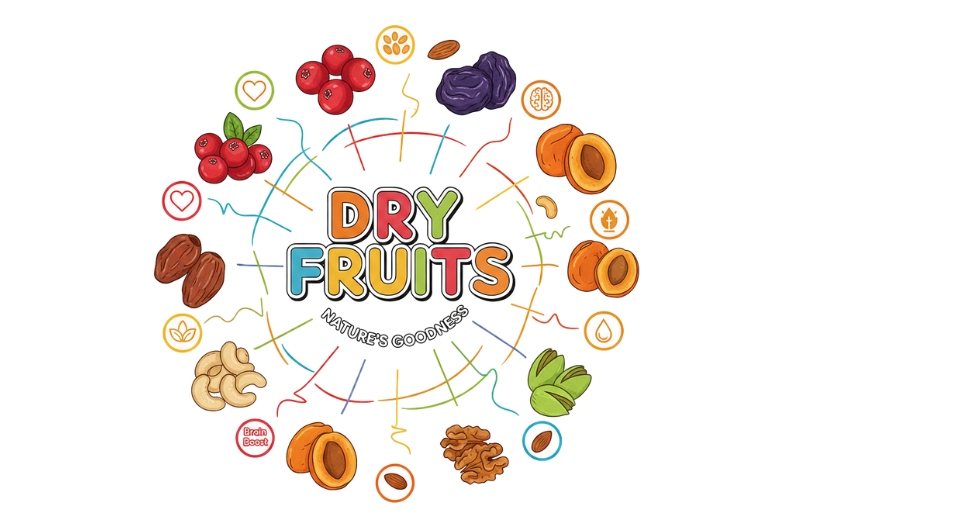

 US: +1 3023308252
US: +1 3023308252






